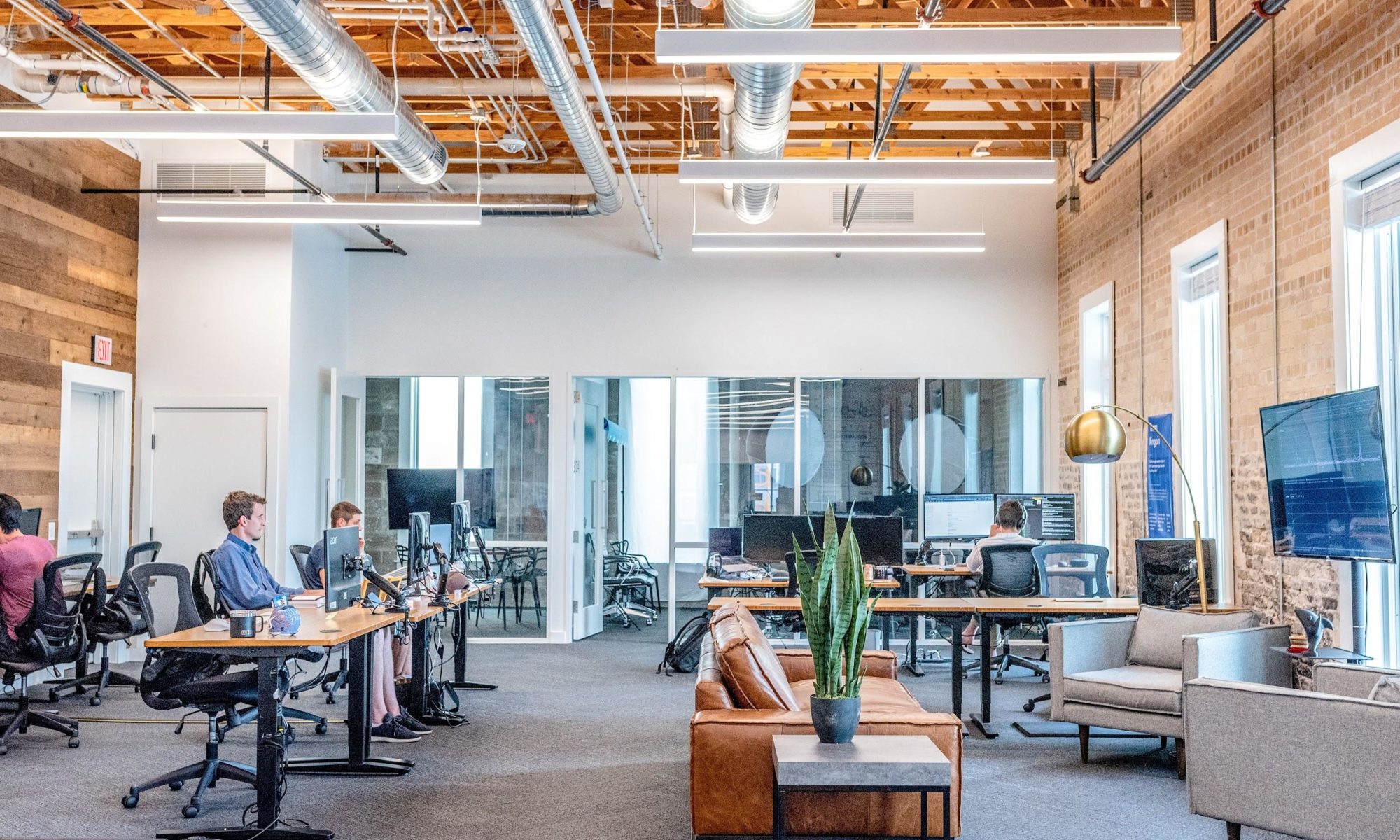As the entire world flexes and changes in the face of the COVID-19 pandemic, so must our workplaces. In many ways, we will have to make adjustments that will stay with us forever, long after the pandemic becomes a distant memory. It’s up to leaders in departments such as IT, facilities, and property management to stay ahead of the game, anticipating and evaluating what changes to expect and what actions to take as our offices move toward an uncertain and categorically different future.
What Will Offices Look Like?
As much as we move toward more and more remote work, we can be sure that there will always be a need for offices. But now, companies are beginning to ask how many offices and how much office space they really need. So what might the post-Coronavirus office look like?
Safety
The top priority when it comes to returning to the office during and after the pandemic will be safety. The future workplace will have to take into account issues such as:
- A one-way flow at entry and exit points
- Sanitation stations for hands and surfaces
- A larger distance between desks
- Video conferencing booths
- Antibacterial desktop screens
Collaboration
If most employees can and do work remotely at least part of the time, the main function of the office will become as a space for collaborative activities that can’t be done from home. This means more office space will have to be dedicated to meeting rooms, though these rooms will have to have enough space for people to sit at a greater distance from one another than was typical previously.
Further, there will be a need to make collaboration and communication between in-office and remote employees more seamless, which may require remote collaboration tools like virtual whiteboards and more video conferencing set-ups.
Less Office Space, More Technology
One thing that is sure to come along with increased remote work is less of a need for as much office space. That means that companies will be able to reduce property and reallocate resources to technology that will be necessary to accommodate and make possible all of this remote work.
For example, some of the technology that may become necessary to invest in includes:
- A smart digital building infrastructure to collect data and support remote services, particularly to understand and analyze occupancy in buildings in order to track peak office times and determine if there are higher-risk areas in the building
- Connectivity applications and tools for voice, video, and online collaboration such as secure VPNs, employee monitoring tools, broadband, videoconferencing (such as Microsoft Teams, Zoom, and Google Workplace), chat and messaging, cloud storage, and sharing tools
Who Goes Where?
Another key consideration for offices will be to designate which staff can work remotely and who must be present in the office. This may be chosen on the basis of such factors as where somebody is in their professional development journey and what stage a project is in. Hiring may also look entirely different as companies can begin to consider hiring talent from faraway places for a remote job that used to be only done in office.
There will also need to be space for much more flexible work arrangements, including weeks that include both working from home and working from the office. Companies may want to consider choosing a hybrid “hub and spoke model” that puts office facilities closer to where employees live.
Home Office Provisions
Spoke or no spoke, one consideration that companies will have to make will be what to provide to employees for work from their home offices. While the pandemic came as a surprise and people had to make do at the start with what they already had, in the future, it will be fair to expect that companies will take it upon themselves to provide employees with the necessary tools and equipment for remote work, including things such as:
- A one-time or monthly allowance for employees to purchase their own work-from-home gear
- Weekly credits to purchase food for lunches at home
- Reimbursement on wifi bills and purchase of equipment such as a desk, keyboard, mouse or headphones
- Childcare assistance such as reimbursement for or credit toward virtual summer camps and nannies
Challenges in the Post-COVID Office
Of course, it can be foreseen that all of these changes will come with their own unique challenges. One will be the much more confusing nature of office space, as companies will have to balance a combination of owned space, standard leases, flexible leases, flex space, co-working space, and remote work, something that can be expected to be significantly complex for operations and facilities staff.
Then there are the technological challenges. When the majority of work and collaboration happens online, the functionality of tech systems will become absolutely critical. If a video conferencing or VPN client goes down, the disruption will be significant. Assuring that each employee has effective internet access, software, and hardware, as well as providing responsive tech support during all relevant hours, will have to become a high priority.
That’s not to mention the issue of security, as more and more sensitive employee and company information will be housed online. This means taking charge of security not only of company equipment but also employees’ personal devices, in pursuit of a multidimensional security model that takes into account identity, UI, network and behavioural analytics.
And of course, it’s worth mentioning the challenge of tracking data about employee health including who has and hasn’t been vaccinated or infected, who has come into contact with whom, and when everybody has or hasn’t been in the office.
Ultimately, there are both many challenges and many advantages to look forward to in a post-COVID world, but the bottom line is that the future workplace will look different from the one we knew before and even the one we know today. The future office is coming – will you be ready?


